Method and raw data
This GitHub repository contains the test methods, data sets, client versions, and raw data. The following benchmarks are available in this notebook.Benchmarks
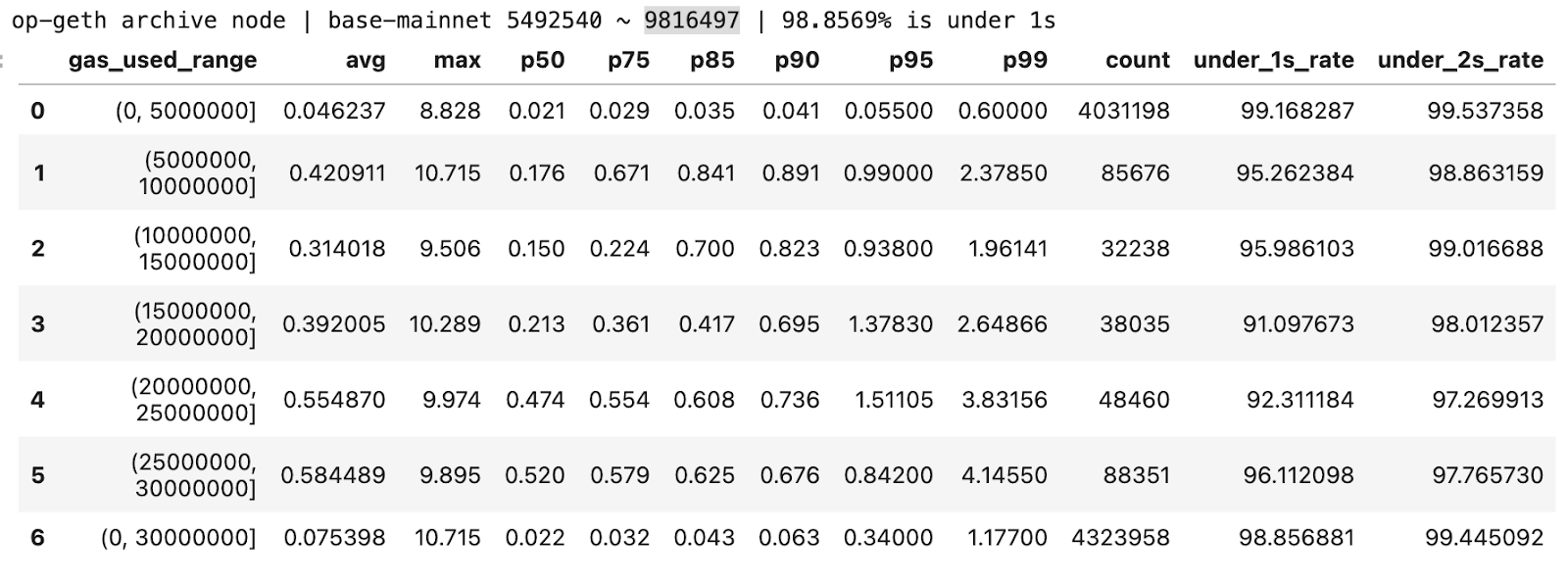 |
|---|
| Figure 1: op-geth / archive node / block 5492540 ~ 9816497 |
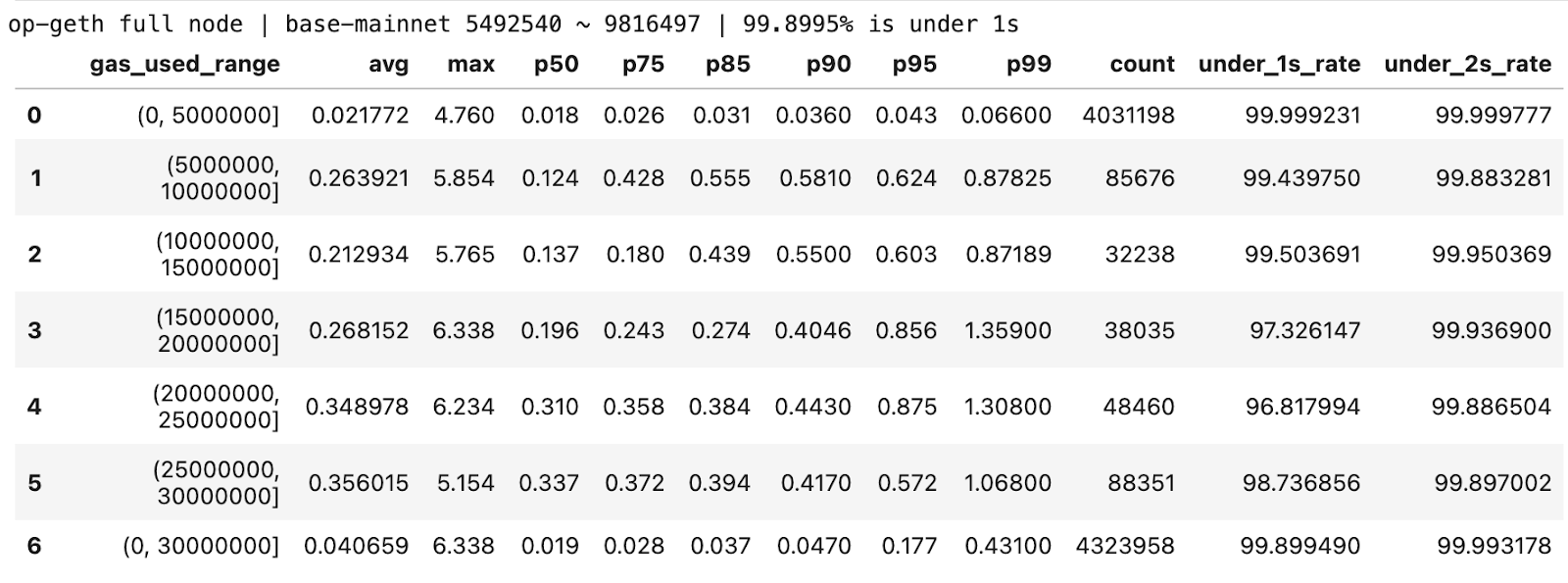 |
|---|
| Figure 2: op-geth / full node / block 5492540 ~ 9816497 |
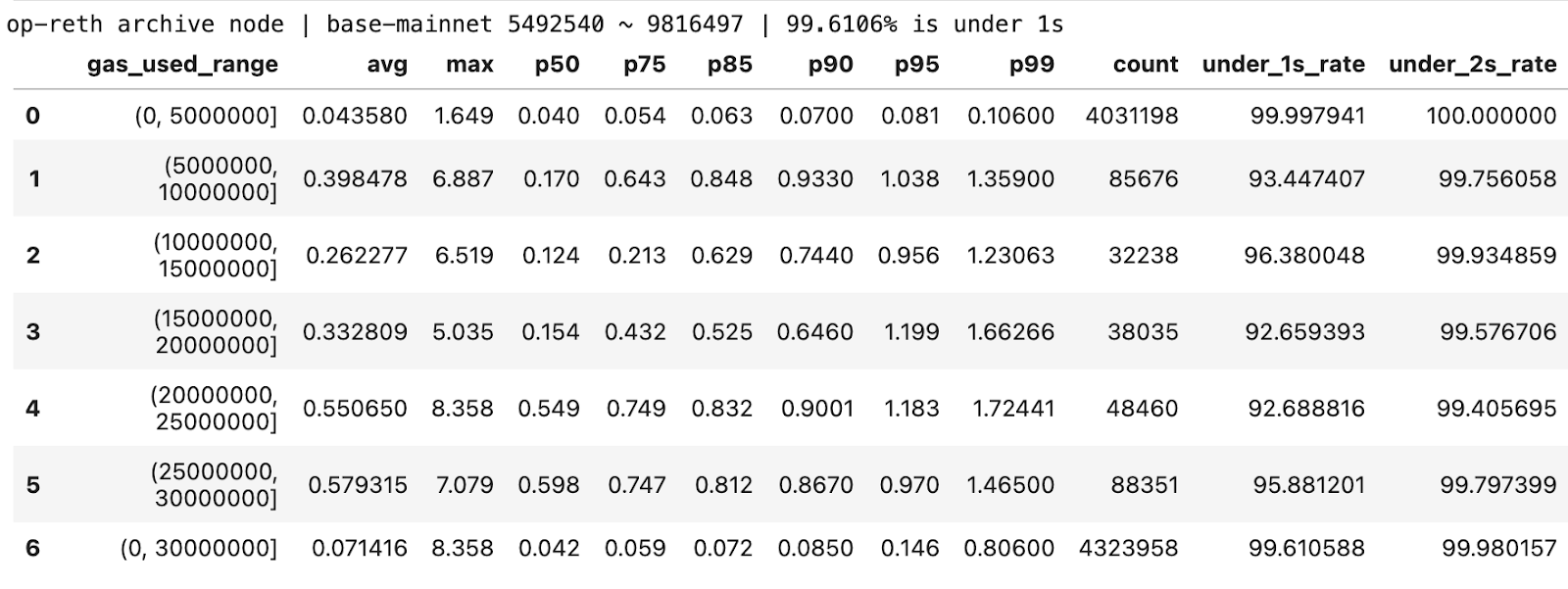 |
|---|
| Figure 3: op-reth / archive node / block 5492540 ~ 9816497 |
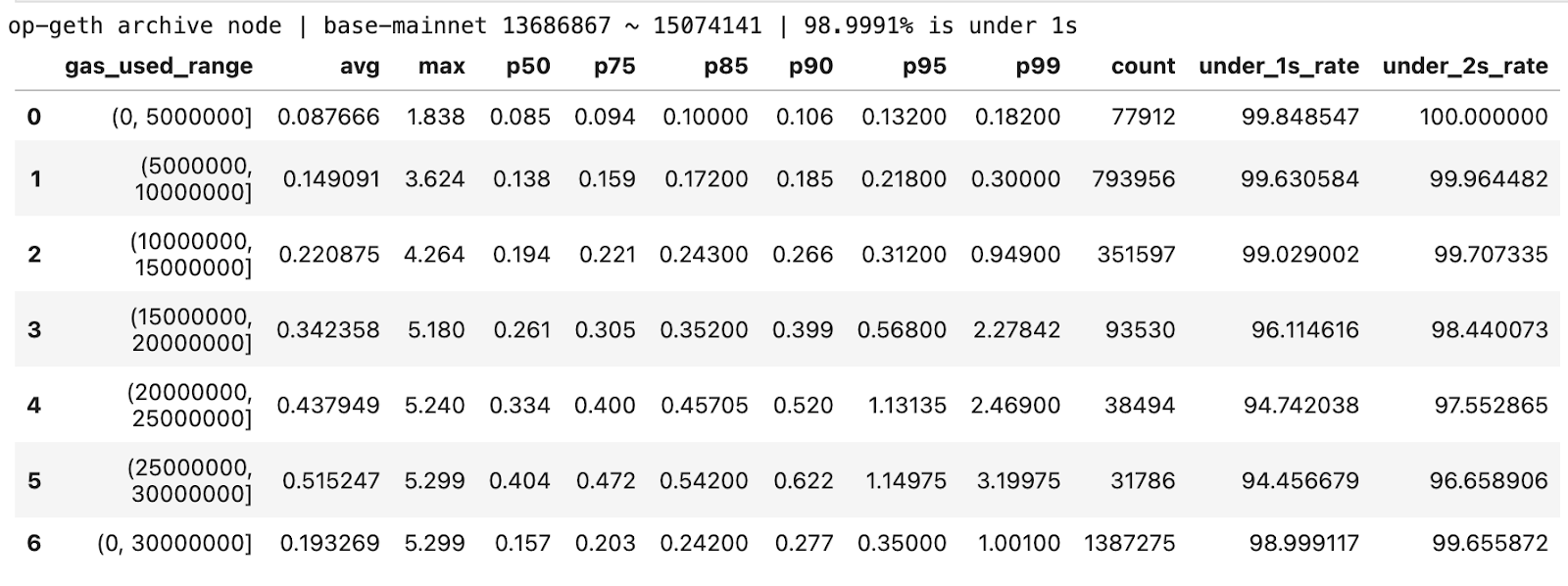 |
|---|
| Figure 4: op-geth / archive node / block 13686867 ~ 15074141 |
 |
|---|
| Figure 5: op-geth / full node / block 14567037 ~ 15074141 |
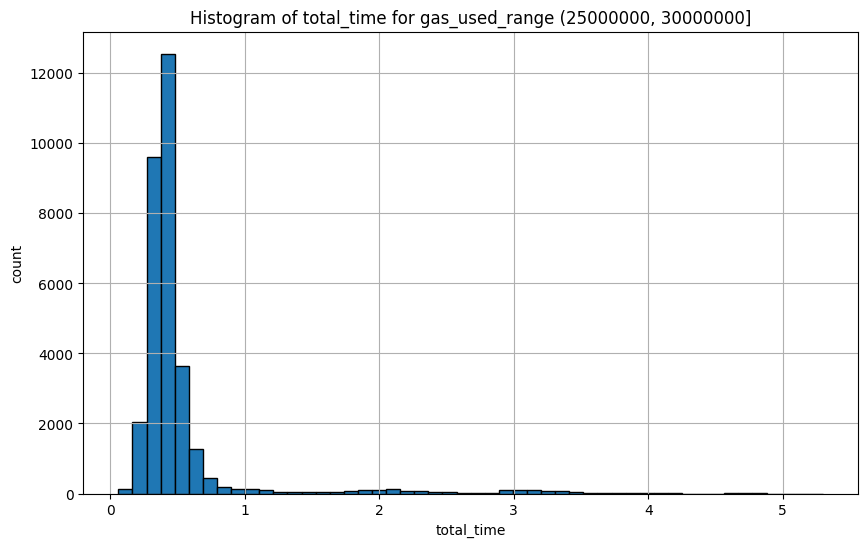 |
|---|
| Figure 6: op-geth / archive node / block 13686867 ~ 15074141 / histogram of 25m~30m gas range |
Expected impacts
Verifier
- Sync from genesis: If OP Chains’ block time drops to one second, verifiers may need longer to sync the chain from the genesis with L1 derivation. However, we expect it won’t be a notable issue for verifiers as OP Stack supports the engine sync.
- Following the tip: The research suggests that verifiers are less likely to have a problem following the tip because nodes could build a block under one second at the highest gas range, especially since most verifiers are full nodes.
Sequencer
- Block progression: As the previous paragraph mentioned, the data suggests we don’t expect problems on a shorter block time.